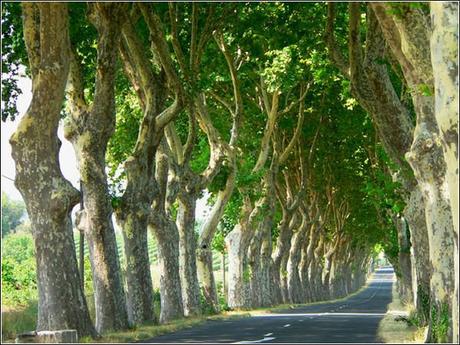Trying to think who's singing the song? It's Lucienne Boyer - with "Parlez-moi d'amour".. (1930) And well before my time before anyone thinks I'm an old fogey..!
3rd August. For those unfamiliar with French roads, I thought I'd add a few words of explanation. Where to start..? There are three main types of roads here and the prefix letter identifies what type of road you can expect.
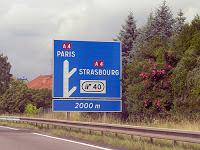 A roads, or Autoroutes, are designated by the letter A followed by a number. An Autoroute is the equivalent of a British motorway or an American freeway. Autoroute signs are indicated with white lettering on a blue background. Although some are free to use, most Autoroutes in France are toll roads - and these are indicated when joining by a sign indicating Péage (the clue's in the name!).
A roads, or Autoroutes, are designated by the letter A followed by a number. An Autoroute is the equivalent of a British motorway or an American freeway. Autoroute signs are indicated with white lettering on a blue background. Although some are free to use, most Autoroutes in France are toll roads - and these are indicated when joining by a sign indicating Péage (the clue's in the name!).
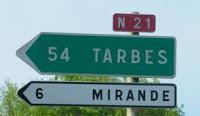 N roads, or Routes Nationales, are the major trunk roads throughout France and on directional signs are depicted with white lettering on a green background. They are designated with the letter ‘N’ followed by a number which is normally shown as white lettering on a red background. Since the recent regionalisation of responsibility of main roads, road numbering has become somewhat misleading and therefore it is recommended to follow the directional signs for your place of destination.
N roads, or Routes Nationales, are the major trunk roads throughout France and on directional signs are depicted with white lettering on a green background. They are designated with the letter ‘N’ followed by a number which is normally shown as white lettering on a red background. Since the recent regionalisation of responsibility of main roads, road numbering has become somewhat misleading and therefore it is recommended to follow the directional signs for your place of destination.
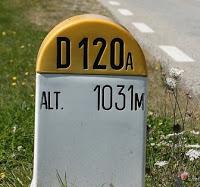 D roads are the Departmental, or county roads, and can range from busy local routes, recently downgraded route nationales or the much smaller country roads and lanes France is so well known for. I must admit to liking driving on D roads as you can find that yours is the only car on the roads. The other main advantage is that you get to see France - as elsewhere, the autoroutes are largely indistinguishable from one another. Then there are the roadside restaurants..
D roads are the Departmental, or county roads, and can range from busy local routes, recently downgraded route nationales or the much smaller country roads and lanes France is so well known for. I must admit to liking driving on D roads as you can find that yours is the only car on the roads. The other main advantage is that you get to see France - as elsewhere, the autoroutes are largely indistinguishable from one another. Then there are the roadside restaurants..However, a note of caution. Drivers on D roads should remain alert as local councils seem to change the posted speed limits arbitrarily.
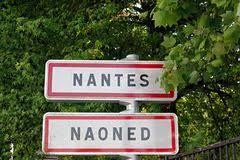 When entering a town, village or hamlet, its presence will be advertised by a sign such as this (right). This means, unless otherwise advised, that the speed limit is automatically 50km/h (30mph). It is commonplace to see the name of the town repeated underneath in the local language. Within the town or village, you may find that the limit changes within the space of a few hundred metres from 50km/h to 30 or even 20.
When entering a town, village or hamlet, its presence will be advertised by a sign such as this (right). This means, unless otherwise advised, that the speed limit is automatically 50km/h (30mph). It is commonplace to see the name of the town repeated underneath in the local language. Within the town or village, you may find that the limit changes within the space of a few hundred metres from 50km/h to 30 or even 20. When exiting a town or village, it will be marked by a sign like this (with a red strike through) which indicated that the 50km/h restriction no longer applies.
When exiting a town or village, it will be marked by a sign like this (with a red strike through) which indicated that the 50km/h restriction no longer applies.Speed cameras have become de rigueur on all roads - and average speed cameras (that make use of automatic number plate recognition technology) are steadily being introduced on autoroutes. The maximum speed limit on D roads (without a central reservation) was formerly 90km/h. It's now 80km/h.
One final tip - offered in the best interests of preserving marital harmony - if your car is fitted with GPS, do yourself a favour and update the memory before travelling! Enjoy your trip!
